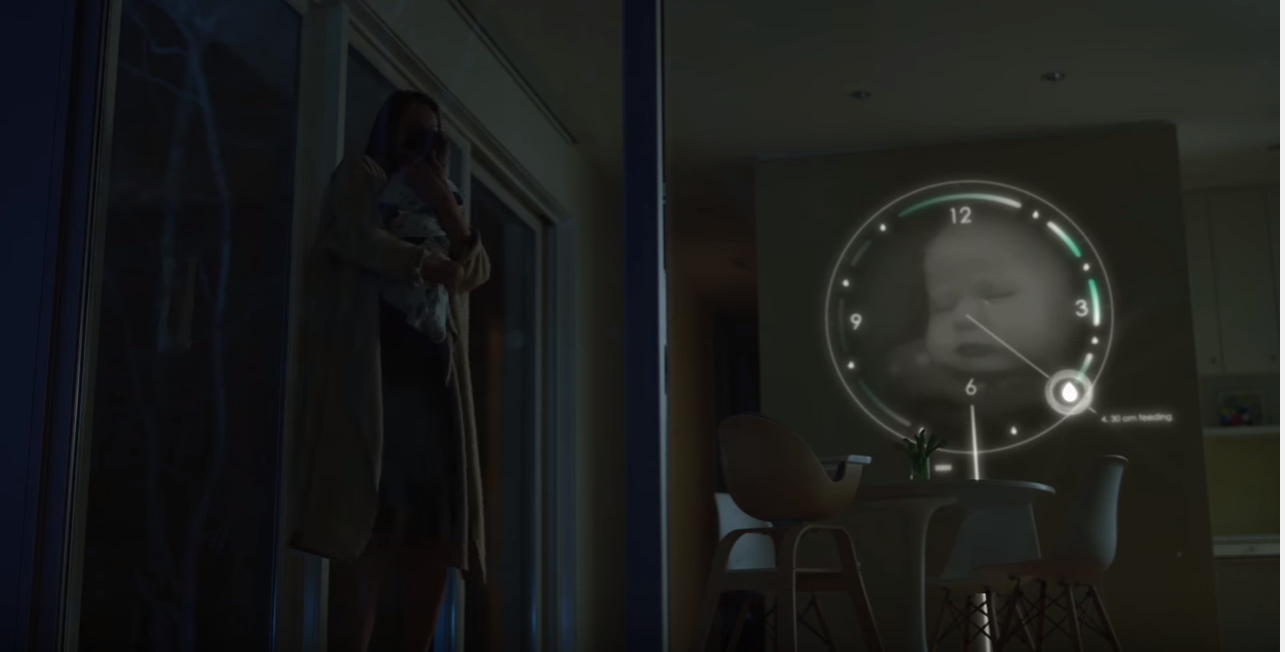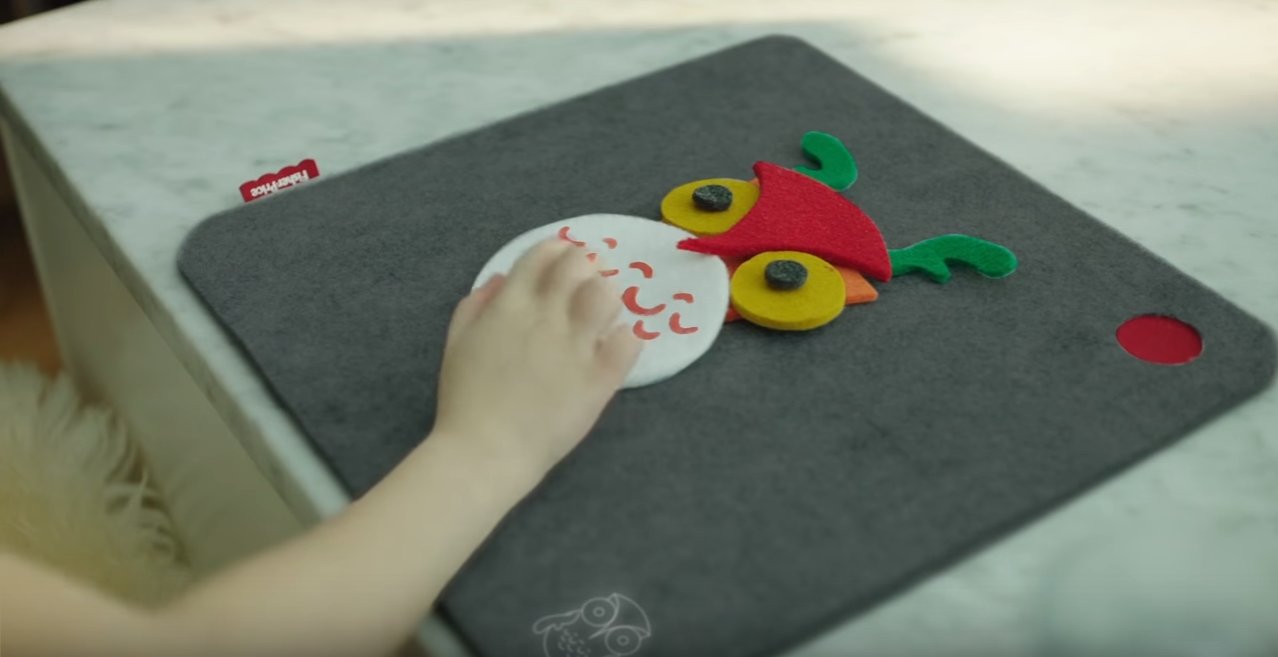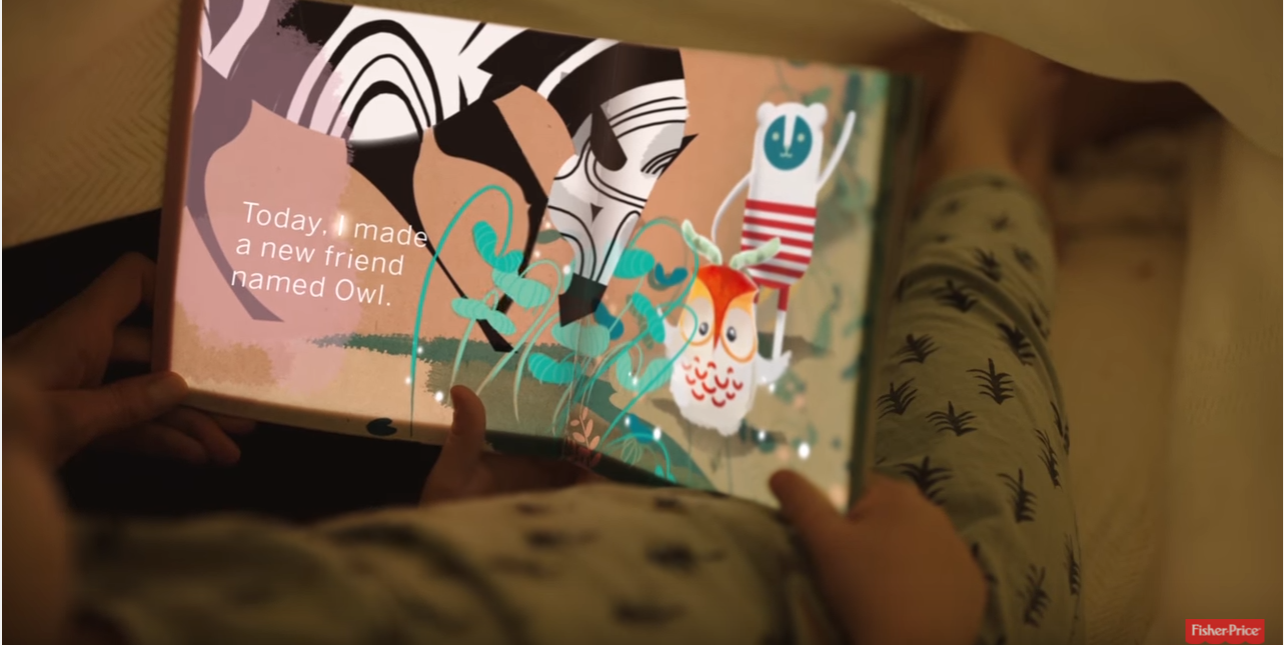Have you seen this new video? It’s short, and provides some whiz-bang examples of what Fisher-Price thinks life will be like for children and parents in the next decade. Watch how augmented reality, smart toys, the internet of things, machine learning, and a few other technologies that I can’t identify will become part of our lives.
The video may seem like a pipe dream (especially all the holograms), but a ten year time frame is probably about right. Here’s my take on the vision.
What you see: A high-tech baby crib/monitoring system that is connected to other devices; children’s height data displayed on a wall.

The internet of things is more than a gimmicky watch. Wearable devices already collect data on your heart rate, sleep cycles, and exercise–why not a smart crib that collects that data on your baby? The crib could alert you when your baby cries, identify when your baby has a temperature, monitor brain waves and breathing, and predict the best time for a nap. Some baby monitoring systems are already available that perform a few of these functions. It won’t be too long before cribs are equipped with them, too.
And the height data projected on the wall looks pretty cool and will definitely save on new paint.
 But is it possible to have too much data? Who owns it? Imagine having data on your children’s activity level, learning outcomes, GPS location, and more, every day, all day. Parents armed with such graphs and figures might easily draw conclusions that are incorrect. Children develop at different rates and labels like “hyperactivity” are culturally bound. I worry about the interpretation and use of all the data that will soon be at parents’ fingertips. What tools will be needed to help parents decipher the data?
But is it possible to have too much data? Who owns it? Imagine having data on your children’s activity level, learning outcomes, GPS location, and more, every day, all day. Parents armed with such graphs and figures might easily draw conclusions that are incorrect. Children develop at different rates and labels like “hyperactivity” are culturally bound. I worry about the interpretation and use of all the data that will soon be at parents’ fingertips. What tools will be needed to help parents decipher the data?
And what about privacy? If you thought privacy concerns surrounding Hello Barbie (the new talking Barbie) were complicated, just think about potential issues with child development, intelligence, personality, playtime, and health data. How does a parent or teen opt out?
What you see: Children interact with a virtual bird; a classic rock-a-stack toy provides a hologram reward when stacked correctly; a toddler follows numbers with a smart walker.
“Augmented” games and toys will become more engaging, interactive, and personalizable. Classic toys will incorporate new features while still retaining the original play patterns that make them great. In these examples, technology adds wonder and delight to playtime, extending the life cycle and experience of traditional toys.
But floating bird holograms make me wonder…how does a young child distinguish between real and imaginary in this new “augmented” world? How potentially confusing is it to blend real and virtual data, where glass doesn’t always act like glass and the outside flora appears inside?
One approach, to make the experience more understandable, is to put the young child in control of the experience, by connecting their action to a specific result. For example, every time they complete the stacking toy correctly, the 3D image appears above the rings, but only as a consequence of their action and not otherwise. A young child will delight in repeating an action to achieve a predictable result, over and over again, and as a result, develop a sense of competency and control over the experience, even if it is virtual. This is in contrast to simply populating their environment with inexplicable and arbitrary 3D characters and objects. It makes for a pretty video, but feels weird and unsettling to me.
What you see: A little girl assembles pieces of a toy from a kit and prints a 3D model of it

Technology will hopefully provide the tools to make all of us more creative. 3D printers are at the forefront of the “maker” movement, allowing us to customize and build 3D objects at home. Legacy publishes 3D Print Kits to guide hobbyists through fun projects like making your own guitar or microscope, while Mattel has announced a 3D printer (ThingMaker) for kids to create their own toys. As 3D printers become more user-friendly and less costly, it won’t be long before 3D printing becomes ubiquitous.
As someone who has designed many different digital creativity tools for kids, I worry that as we limit choices to simplify the process (as happens in the video), we are also downgrading the experience by reducing opportunities for self-expression. Simply put, it’s the difference between paint-by-number and drawing a picture from scratch. Companies like Fisher-Price will continue to struggle with the right balance of directed activity, aimed at accomplishing a specific goal, and open-ended play that fosters imagination and creativity. Sure, some tech for kids can and should have rules, extrinsic rewards and correct answers. That’s fine, as long as we don’t turn little people into automatons. It is infinitely more difficult, however, to design toys that expand choices rather than limit them.
What you see: Reading a personalized digital book.

Gorgeous interactive storybooks are already available, my favorites are by Nosy Crow. As technology improves, digital books will become personal, changing based on a child’s preferences, experiences, and reading level. Adaptable books and toys like this are promising because they are more effective learning tools and will grow with your child.
Overall, I think that the Fisher Price vision of the future of parenting is a reasonable projection of where we are headed, and isn’t as frightening as some critics portray. Obviously there are issues to resolve, but as long as we put the emphasis where it belongs, on building healthy and happy kids who reach their full potential, new technologies will continue to enhance the lives of families.